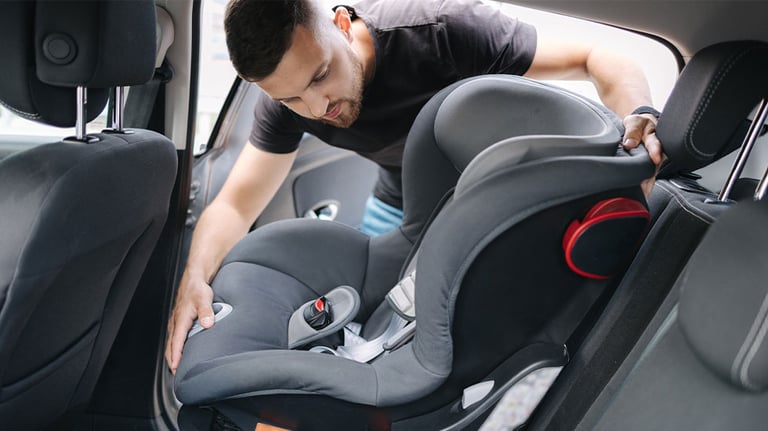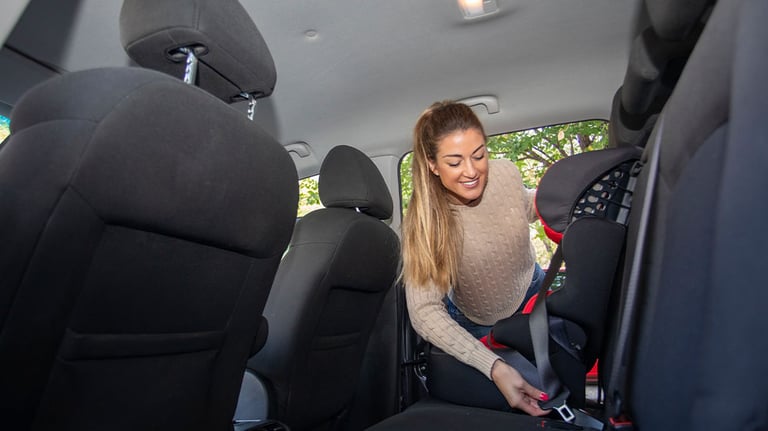Car seats save lives. Period.
“I’m actually a car seat geek,” said Tanya from Columbus. She thoroughly read the manufacturer’s installation recommendations and considered herself an expert when she and her husband, Steve, had their first child. But after the birth of their second daughter, she relinquished control and sent Steve on a mission for a seat inspection.

“I was too sleep-deprived to do the car seat safety check myself,” she said.
That check saved little Charlotte’s life when a distracted driver crashed into their car when she was 2 weeks old. “She slept through it,” Tanya said.
Federal regulations requiring babies to ride in crash-tested car seats did not appear until 1985. Tennessee pediatrician-turned-public-safety-officer Bob Sanders recognized that nearly 90 percent of the 1,000 babies killed in a typical year during the 1970s could have been saved through the use of a safety restraint system.
According to a People magazine article, he explained to parents and legislators that an unbelted child weighing 10 pounds assumes the force of a 300-pound projectile when a car going 30 miles per hour stops suddenly.
A Good Housekeeping retrospective on car seat advertising features a sling-like seat from the 1930s that provided a way to contain children for the convenience of their parents.

Focus on safety
The focus on safety began in the 1960s when two inventors developed similar designs for seats that took advantage of seat belts. American Leonard Rivkin developed a metal frame with a buckle; the British version by Jean Ames included a rear-facing seat similar to what we use today.
While car seat laws vary from state to state, most states require children up to age 4 or up to 40 pounds to ride in a car seat, and most recommend children up to age 2 remain in rear-facing seats. Booster seats are recommended for children up to age 8 or 4’9″, and the Safe Seats 4 Kids website suggests children up to age 13 should stay in the back seat.
“Children are not tall enough and their bodies aren’t fully developed to withstand the impact of an airbag in the front seat,” said Kellie O’Riordan, traffic safety program manager at AAA. “There are heartbreaking fatal injuries that could have been prevented by keeping the child safely buckled in the back seat.”

Proper fit
Also discussed are how airbags and projectiles can play a role in injuries and deaths in a crash. Other topics include ensuring the car seat restraint fits the child properly.
“When you travel—whether it’s a short trip or a long one—take the time to make sure all occupants are safe. Parents need to be good role models. Avoid distractions and buckle up,” said O’Riordan.
Car seat safety check appointments take about 30 minutes per seat and include all ages, not just infants. There are different challenges with each age group, said O’Riordan. For example, some children learn quickly how to get out of the seat.
“We can find options and even offer recommendations for behavior modification, with no criticism or judgment,” she said. “We are here to help because we want to provide education to prevent injuries.”

